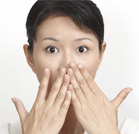Time and time again I’ve posted about the many wonders of Tea Tree Oil Products– from skincare, to home care.
This time, I’m presenting you with a sort of summary that lists the most important factors of Tea Tree when using it for treating acne in all its forms, along with some basic information and tips that you should know when using this wonderful essential oil and finally decide on try it on: it is a really cheap way to fight those pesky pimples – plus, it’s natural and you do not have to use any chemicals on your precious ans sensitive skin!
Uses and benefits of Tea Tree oil for Acne:
- Tea tree oil is an essential oil distilled from the leaves of the melaluca plant which is native to Australia. The oil is active against bacteria, viruses, and fungal infections. It’s used to aid in healing abscesses, acne, athlete’s foot, blisters, burns, cold sores,
dandruff, herpes, insect bites, oily skin, rashes, and warts. - A laboratory study found that certain active components of tea tree oil effectively slow the growth of P. acnes. The oil’s proponents claim that even severe cases of acne have been shown to benefit from it.
- Tea tree oil kills p. acne and is an ingredient in many acne skin care formulations—cleansers, toners, and moisturizers. Tea tree oil is considered as effective as benzoyl peroxide for killing p. acne bacteria, but it takes longer. However, tea tree oil doesn’t cause the redness, irritation, and inflammation that’s common with benzoyl peroxide.
- For very sensitive skin use calming and soothing masks, such as an aloe vera, allantion, tea tree oil, or green tea compress. Other soothing ingredients for masks or compresses include licorice and red raspberry.
- Essential oils such as geraniun, lavender, lemon and tea tree oil can be used to help regulate the sebaceous glands. These oils need to be diluted. A facial spray with lemon balm essential oil can help close the pores. Witch hazel can also be applied after cleansing.
- Where you feel a pimple about to erupt, rather than squeeze it, try applying spirits of camphor, essential oil of lavender or tea tree oil four or five times daily to help dry it up and perhaps prevent eruption. If you do get an eruption and are prone to scarring, use a salve which includes vitamin E, calendula and comfrey.
Hope this help you decide wether you need this healthy approach to treat your acne with tea tree oil or not. Thanks for reading!


